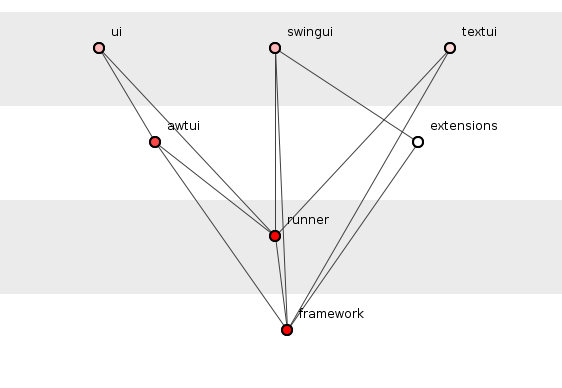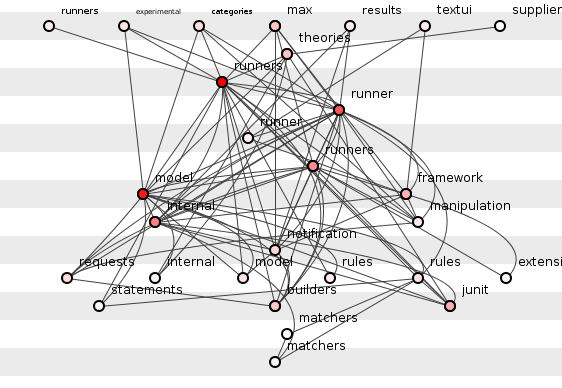Month: March 2013
Dictionary + algorithm + PoD t-shirt printer + lucrative meme = rape t-shirts on Amazon
Dictionary + algorithm + PoD t-shirt printer + lucrative meme = rape t-shirts on Amazon. Pete Ashton explains how programmers can accidentally generate pro-rape t-shirts to sell on Amazon (by swapping a list of all English verbs into the “Keep Calm and ____ On” meme), but then draws a conclusion about digital literacy that I think is exactly backwards.
This is a great example of what I think Digital Literacy should mean. The world around us is increasingly governed by these algorithms, some annoyingly dumb and some freakishly intelligent. Because these algorithms generally mimic decisions that used to be made directly by people we have a tendency to humanise the results and can easily be horrified by what we see. But some basic understanding of how these systems work can go a long way to alleviating this dissonance. You don’t need to be able to write the programmes, just understand their basic rules and how they can scale.
Is he suggesting that the problem here is that non-programmers don’t understand enough about algorithms? I think the problem here is that the algorithm’s creators didn’t think enough about the context of their program, aka the real world.
This reminds me of Falsehoods Programmers Believe About Names and Time. Apparently we need a conversation on Falsehoods Programmers Believe About Words, too.
David Remnick: A Scandal at the Bolshoi Ballet
David Remnick: A Scandal at the Bolshoi Ballet. Looooooooong.
Comment: Beyond ‘quick wins’: Decolonizing British Columbia – Op-Ed – Times Colonist
Comment: Beyond ‘quick wins’: Decolonizing British Columbia – Op-Ed – Times Colonist. Way to go, Times Colonist. How can I encourage them to keep posting thoughtful pieces like this? Should we be sending letters in response?
Redress settlements are necessary, but not enough. As the Idle No More movement so well illustrates, the problems associated with a century or more of white supremacy are hardly over. The murder and disappearance of hundreds of indigenous women is tragic testimony to that fact. Without mainstream society taking responsibility for the past, do we have a future?
For its part, the provincial government has done even less than the federal government. In our classes, students are often stunned and at times end up in tears when they learn the truth about the province’s past. They deserve better.
The Rocky Transition to a Natural, Gift Economy
The Rocky Transition to a Natural, Gift Economy. Dave Pollard.
Interviewed: Icelandic activist who took down his government
Dark shadows
Dark shadows, Clay Shirky on politics of infographics and software interfaces. “The Washington Post has produced a white-people map of murder. Homicide Watch has produced a brown-people map.” Yes.
The Post’s default view is a map. Homicide Watch’s default view is a face. The Post’s view is aggregate and historical; Homicide Watch’s is personal and recent. The Post focuses on murders, Homicide Watch on victims. The Post gives you all the murders; you have to zoom in for the details. Homicide Watch starts with the most recent events; you have to zoom out for the bigger picture. The most recent murder the Post puts on its map was in December of 2011. As I write this, the most recent murder Homicide Watch put on its map was last night—Howard Venable Jr., stabbed to death at Fuller and 16th NW.
The Post’s map is about neighborhoods and patterns. (When I showed the Post’s map to my journalism students and asked whom they thought the ideal audience was, they said, “Realtors.”) Homicide Watch’s map is about people and events. The Post’s map tells you things like, “Stay the hell away from Anacostia.” HW tells you that Venable was 68 years old, and gives you a tip line for the cops, if you have any idea who killed him.
Not to put too fine a point on it, The Washington Post has produced a white-people map of murder, a map that assumes you couldn’t possibly know the victim. Homicide Watch has produced a brown-people map—a map that assumes you might, a map for a city where brown people are 30 times more likely to be murdered than white people.
Latanya Sweeney’s name produces a different view than yours.
Latanya Sweeney’s name produces a different view than yours. Another example of how a “passive” or “neutral” algorithm will reflect racism and other biases from its context. Nice to see a response to this situation that asks how algorithms can reflect better politics, rather than asking how people can be more forgiving of the programmers who didn’t think about this.
Professor Latanya Sweeney found that searching “Black-identifying” names like hers resulted in Google.com and Reuters.com generating ads “suggestive of an arrest in 81 to 86 per cent of name searches on one website and 92 to 95 per cent on the other.” This means that when Professor Latanya Sweeney (who has no criminal record) googles herself, or when anyone googles her, one of the top results is “Latanya Sweeney: Arrested?” According to the study, when we google the names of Black-identifing names, we’re very likely to see the words “criminal record” or “arrest.” That view sucks! And it only serves to edify negative stereotypes, which potentially limit people with “Black” names from accessing equal means of sustenance and amenities. Meanwhile, googling a white-identifying name produces “neutral” content. (The ads that come up when I google my own name offer viewers private information for a fee.)
And it is how this digital view is shaped that is most disturbing: Google assures that there is no racial bias in the algorithms they use to position ads. Rather, the algorithms “learn over time” which ads are selected most frequently and then they display those. The algorithms are simply reflecting the dominant values of our time, but demonstrating them to each of us differently, depending on our own particularities, and from what is know from our individual and collective clicks: these algorithms cannot result in a more panoramic view. So, thank you to Latanya Sweeney for rubbing the fog off of my view, for now at least. Otherwise, because of my race, and my name, I may not have seen the racist outcomes these algorithms are producing.
A simple suggestion to radically improve your package structure
A simple suggestion to radically improve your package structure. Edmund Kirwan on radial encapsulation. Bookmarking is not endorsement ;)
JUnit’s evolving structure
JUnit’s evolving structure. Edmund Kirwan traces JUnit’s increasing code interdependencies. From early simplicity:

To increasing tangles:

I am thinking a lot about code architecture right now and trying to learn best practices for building structures that can scale over time. This is a huge topic that a lot of smart people have strong feelings about– when I read about it I often come upon vast areas I didn’t even know existed and it is easy to suddenly feel small and anxious, like people will judge me for not knowing how to do all of it. So I am appreciating this critique as much for the critical analysis as for the obvious love and admiration the writer has for the JUnit developers. I don’t know enough yet to evaluate the actual critiques, even!
Summary.
Programmers should be forced to wear their systems’ package-structures on their tee-shirts.
Practice radial encapsulation.
JUnit is a masterpiece.
